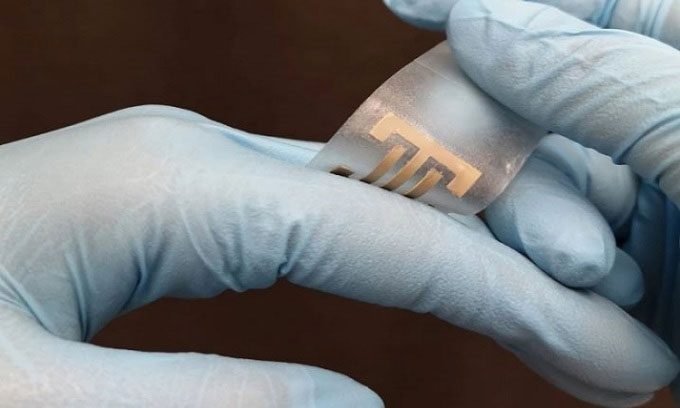Researchers Discover Electrical Application for Wound Healing, Promoting Recovery by Eliminating Bacteria.

The ePatch is very soft and flexible. (Photo: Terasaki Institute)
Developed by the Terasaki Institute for Biomedical Innovation in Los Angeles, the ePatch medical dressing integrates electrodes made from copper nanofibers combined with a type of hydrogel derived from seaweed known as alginate. Alginate has been widely used in surgical dressings due to its biocompatibility and optimal moisture retention. By chemically modifying alginate and adding calcium, scientists were able to enhance the functionality and stability of the silver nanofibers. The final hydrogel product is printed onto a flexible silicone sheet, with part of the sheet’s surface covered by a design pattern.
When the design pattern is removed, the remaining alginate forms two electrodes that are connected to an external power source. By altering the size and shape of the silicone sheet, the research team can create ePatch pieces capable of covering and conforming to various types of wounds.
In experiments conducted on rats with external wounds, scientists observed that the electrical current from the medical dressing accelerated the healing process, not only by facilitating the movement of skin and granulation cells to the wound site but also by stimulating blood vessel formation and reducing inflammation. While the wounds in the untreated group of rats took 20 days to heal, those treated with the ePatch only required 7 days.
Additionally, due to the antibacterial properties of the dressing, the risk of infection was minimized. When the ePatch was removed at the end of the treatment process, rats using the product had fewer scars than those in the control group, partly because skin cells did not adhere to the silicone substrate and therefore did not come off with the dressing.
“By carefully selecting materials and optimizing the gel formulation, we can develop a multifunctional medical dressing that is easy to produce and cost-effective, helping to accelerate wound healing,” said Dr. Han-Jun Kim from the Terasaki Institute. The research was published in the journal Biomaterials.


















































